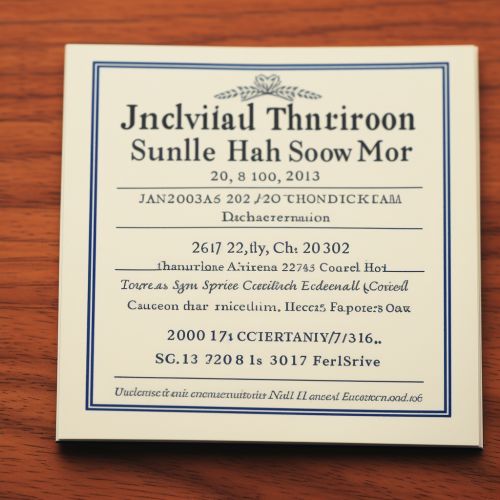Template:Cite journal
Overview
A "Cite journal" template is a predefined format used in academic and scientific writing to provide a consistent method of citing sources from journal articles. The template is designed to ensure that all necessary information is included and presented in a standard format, making it easier for readers to locate the original source of the information. This template is widely used in Wikipedia and other online encyclopedias to maintain a high level of academic integrity and to adhere to the principles of citation and avoiding plagiarism.
Usage
The "Cite journal" template is used by inserting the template code into the text of an article at the point where the citation is required. The template code includes various fields that need to be filled in with the details of the journal article being cited. These fields include the author(s), title of the article, title of the journal, volume and issue number, publication date, page numbers, and DOI (Digital Object Identifier) if available.


Fields
The "Cite journal" template includes several fields that are used to provide detailed information about the journal article being cited. These fields are:
- Author: The name(s) of the author(s) of the journal article. This field is mandatory.
- Title: The title of the journal article. This field is mandatory.
- Journal: The name of the journal in which the article was published. This field is mandatory.
- Volume: The volume number of the journal in which the article was published.
- Issue: The issue number of the journal in which the article was published.
- Pages: The page numbers of the article in the journal.
- Year: The year in which the article was published. This field is mandatory.
- DOI: The Digital Object Identifier of the article, if available. This is a unique alphanumeric string assigned to a digital object, such as a research report or a journal article, to provide a persistent link to its location on the internet.
Benefits
The use of the "Cite journal" template offers several benefits. It ensures that all necessary information about a source is included in a citation, which helps readers to locate the original source of the information. The template also provides a consistent format for citations, which makes it easier for readers to understand the citation and for editors to check the accuracy of the citation. Furthermore, the use of the template helps to maintain the credibility and integrity of the article by demonstrating that the information has been sourced from reputable and reliable sources.
Limitations
While the "Cite journal" template is a valuable tool for citing journal articles, it does have some limitations. The template may not be suitable for citing sources that are not journal articles, such as books, websites, or personal communications. In these cases, other citation templates may be more appropriate. Additionally, the template requires detailed information about the source, which may not always be readily available. Finally, the use of the template requires a certain level of technical knowledge and familiarity with the template code, which may be a barrier for some users.
